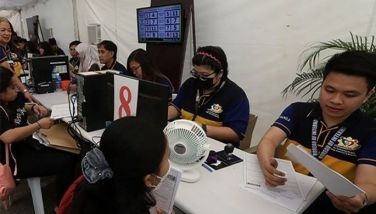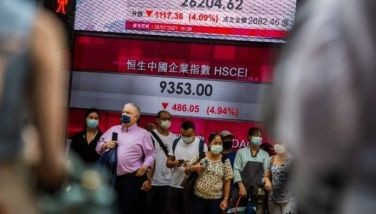Going digital is the key

We are still lucky.
Had the COVID-19 pandemic happened when mobile phones were still not around, when the concept of social media was still in its infancy, when there were still no transport network vehicle services (TNVS) to deliver our food, groceries and medicine, when the idea of online streaming of films and TV series was not yet in mind, or the use of technology and the internet meant dialing up to get a connection, or when video conferencing technology had not been invented, things would have been different and doubly difficult for all of us.
According to Yan Xiao, project lead for digital trade of the World Economic Forum, and Ziyang Fan, WEF LLC digital trade head, the pandemic has accelerated 10 key technology trends which have kept society functional at a time of lockdowns and quarantines. These are: online shopping and robot deliveries, digital and contactless payments, remote work, distance learning, telehealth, online entertainment, supply chain management 4.0 (using Big Data, cloud computing, Internet-of-Things, and blockchain), 3D printing technology (allowing snorkels to be converted into respirators), robotics and drones, and 5G and information and communications technology.
For one, COVID-19, they said, has transformed online shopping from a nice-to-have to a must-have around the world. Unfortunately, they point out that in-person delivery is not virus-proof and so many delivery companies and restaurants in the US and China have launched contactless delivery services where goods are dropped off at a designated location instead of from and into the hands of a person.
Similarly, contactless digital payments, either in the form of cards or e-wallets, are not new, but their popularity has surged during the lockdown. Cash can carry the virus, but digital payments and transactions allow people to make online purchases, pay for goods and services and even utility payments, and receive stimulus funds in a safe and fast manner, they said.
In the article, the two pointed out that COVID-19 has demonstrated the importance of digital readiness and of building the necessary infrastructure to support a digitized world.
Just recently, Finance Secretary Carlos Dominguez recommended the adoption of digital technologies and fully automated systems to ensure efficient and corruption-free distribution of emergency subsidies among beneficiaries, citing the experience of the Small Business Wage Subsidy Program implemented earlier this year which distributed aid through electronic payment channels. Too late? Well better late than never.
Let us hope that other local government units adopt the best practices of other LGUs in terms of delivering public service to their constituents in a way that reduces, if not totally, eliminates physical contact.
Under the leadership of Mayor Abby Binay, Makati City has succeeded in using technology to help reduce the spread of the virus by way of contactless transactions.
For instance, mobile apps have enabled Makati City healthcare representatives to provide diagnosis to constituents suspected of having contracted the virus. The same apps also help them keep track of confirmed cases, thus assuring the best treatment and care possible to those who need attention in isolation while protecting the community as a whole.
The use of technology as a critical tool for efficient provision of services extends to public education. Makati City has turned to technology to keep learners stimulated, with Mayor Binay moving for subsidized low-bandwidth solutions so that online learning will be of less financial burden to parents.
The city has also partnered with GCash to allow residents to complete financial transactions with the local government without having to go to City Hall. To settle their business and real property taxes, all they have to do is log on to makationlinepayments.com. A step-by-step guide has been made available on the city’s official Facebook page My Makati.
The LGU has also distributed P5,000 to registered voters, Yellow Card holders, and Makatizen Card holders using GCash to help them during the community quarantine. Under the Makatizen Economic Relief Program, the city government allocated P2.7 billion for some 500,000 residents affected by the pandemic. It has, likewise, distributed the second tranche of financial assistance for at least 8,000 tricycle, jeepney and pedicab drivers using electronic money transfers to avoid physical contact and ensure fast delivery of benefits.
One Makati resident, Mario Lutang, recalls that after receiving P5,000 from Makati City’s Makatulong P5K Program and another P5,000 by his wife, he was able to build a cart by using the skills he learned from a welding vocational course at the University of Makati. He was then able to sell fishballs. He could have used the money to buy food, but he chose to go into business. He now has a loyal clientele and earns P500 to P600 a day selling fishballs and refreshments. On his cart there is a signage that says “Katas ng Makatulong.”
How many more success stories like Kuya Mario there are, we don’t know, but what is important to remember is that amidst the tragedy, people have found a silver lining.
For comments, e-mail at [email protected]
- Latest
- Trending





























